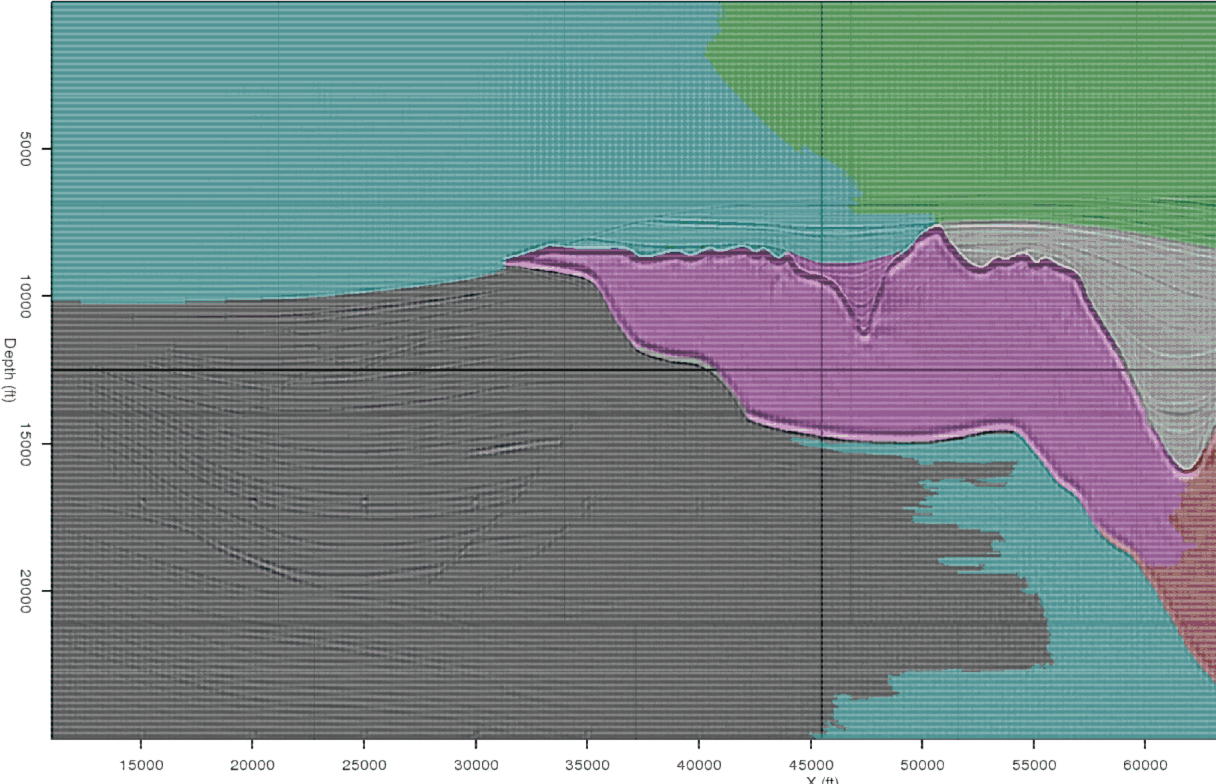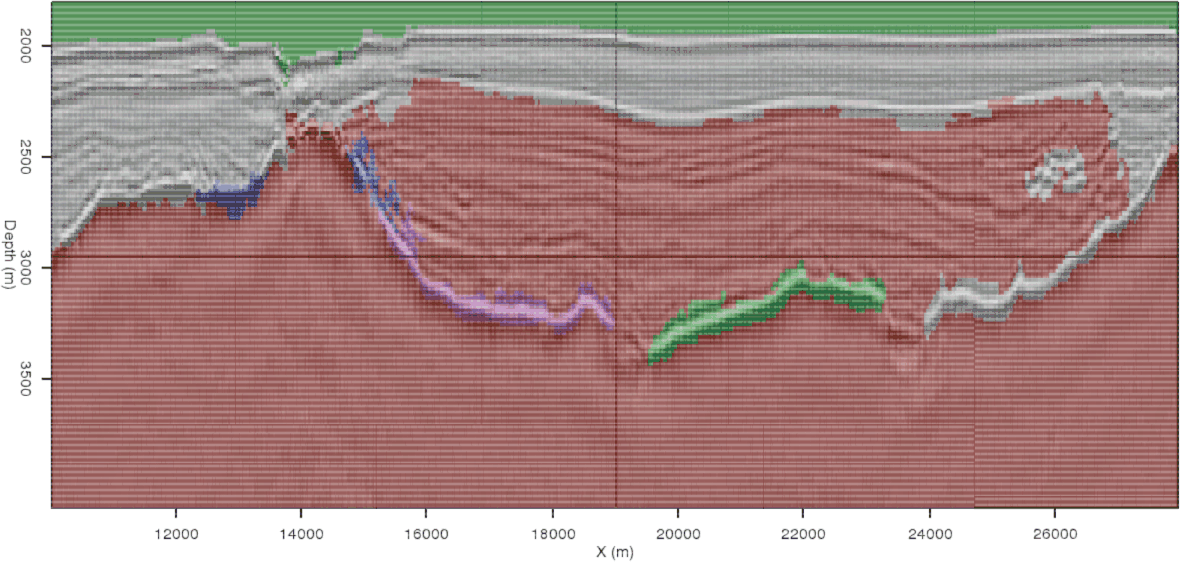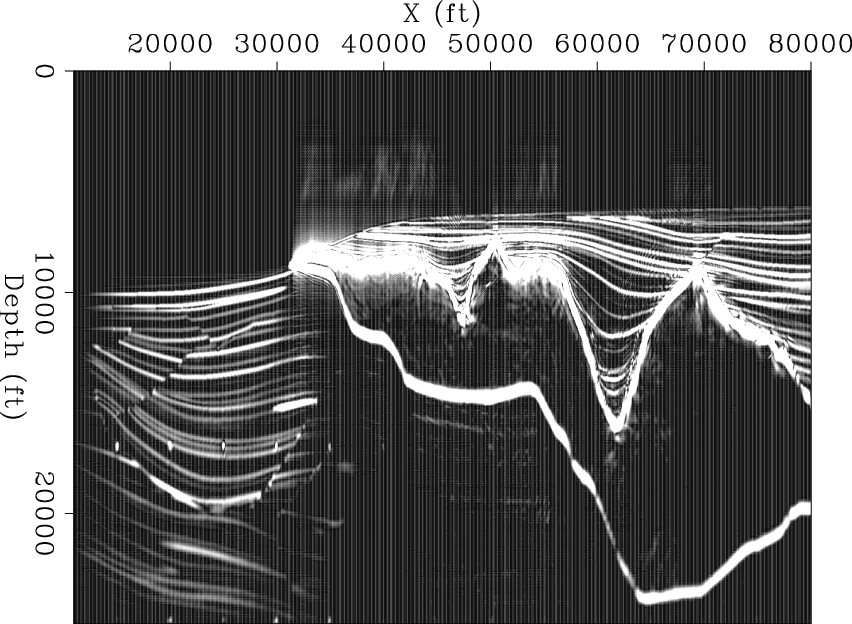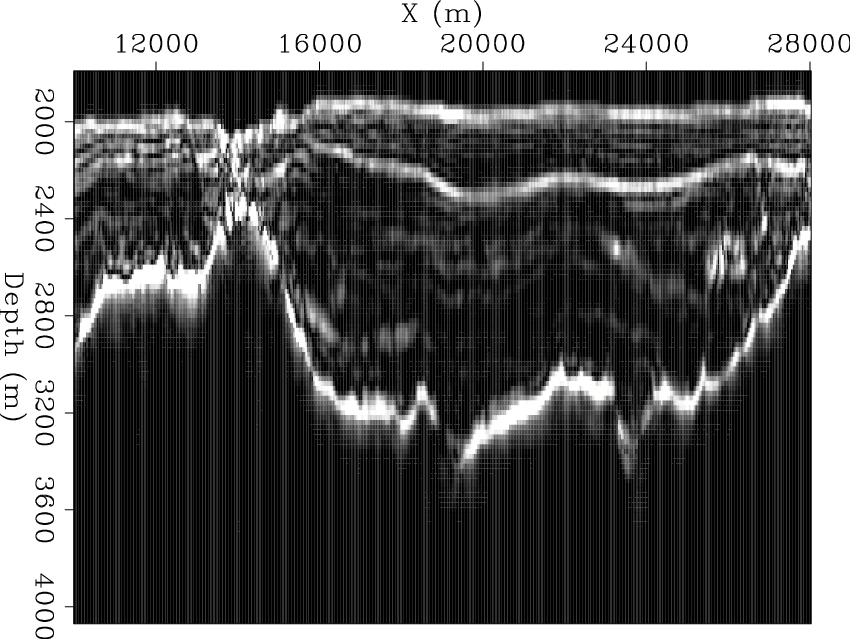|
|
|
|
A new method for more efficient seismic image segmentation |
| (4) |


|
|---|
|
zig-origseg,uno-origseg3
Figure 3. Segmentation of the example seismic images from Figure 1, using the original algorithm from Felzenszwalb and Huttenlocher (2004). |
|
|


|
|---|
|
zig-env,uno-env
Figure 4. Result of calculating the amplitude envelope of the example images seen in Figure 1. These become the input to the new segmentation algorithm. |
|
|
|
|
|
|
A new method for more efficient seismic image segmentation |